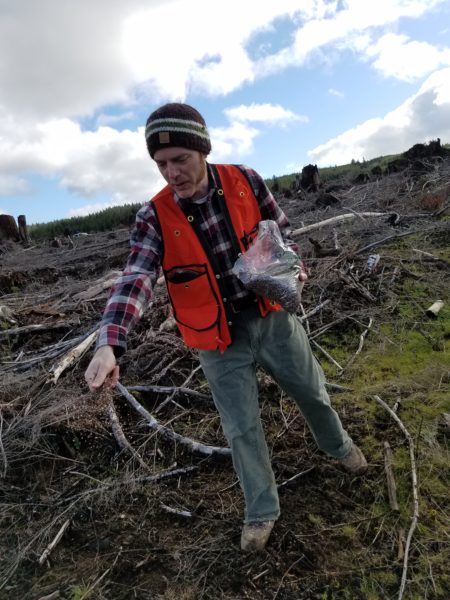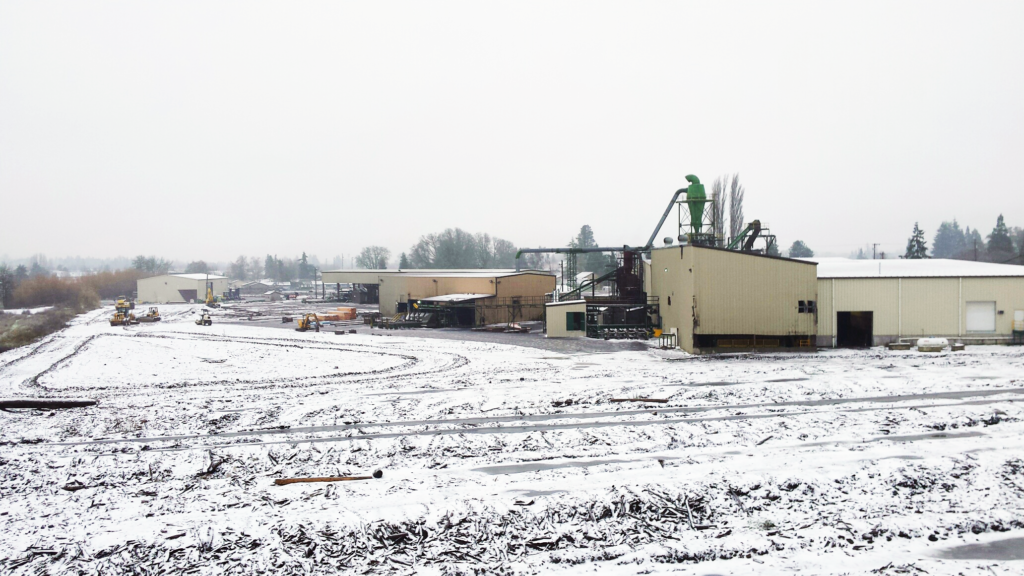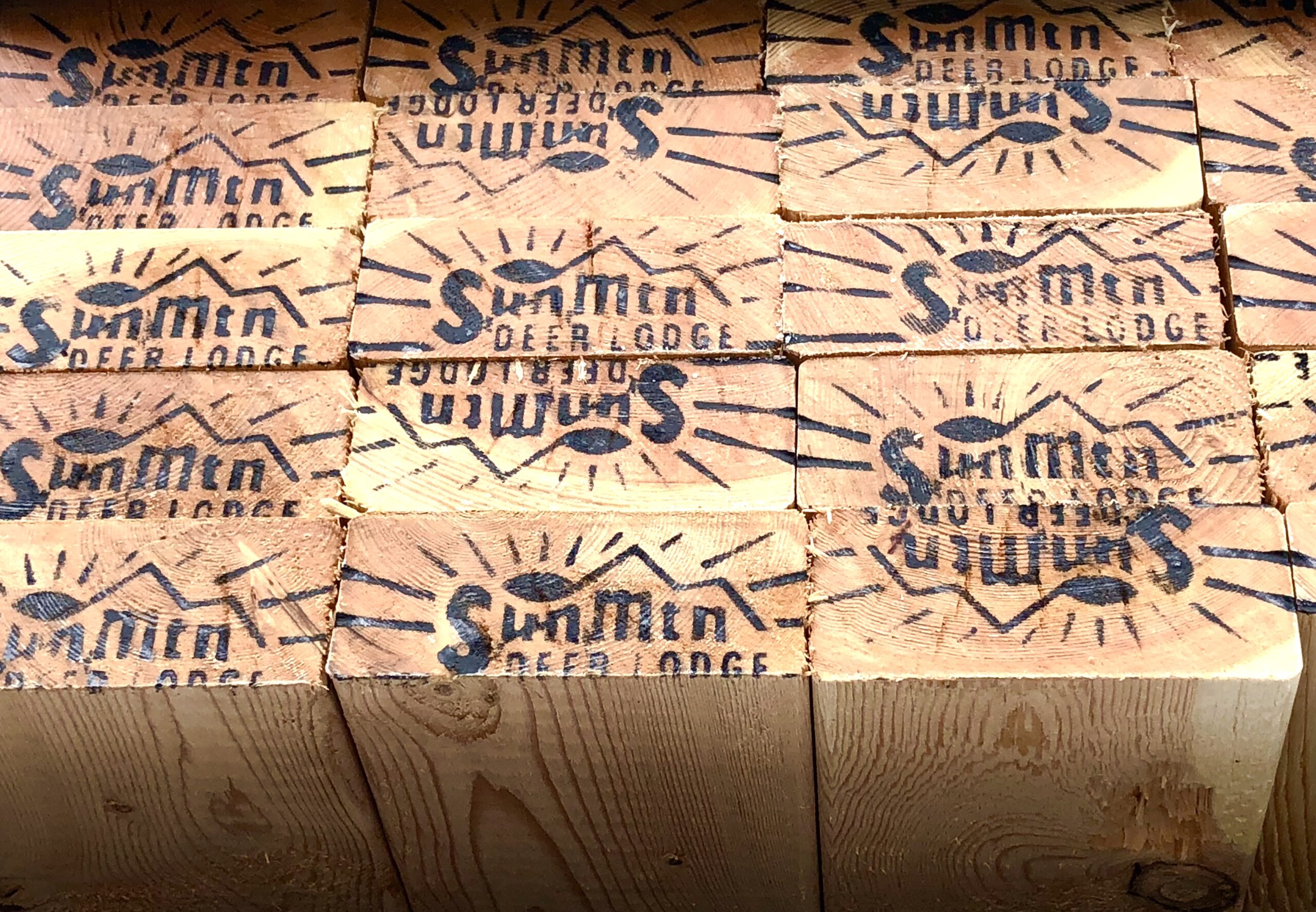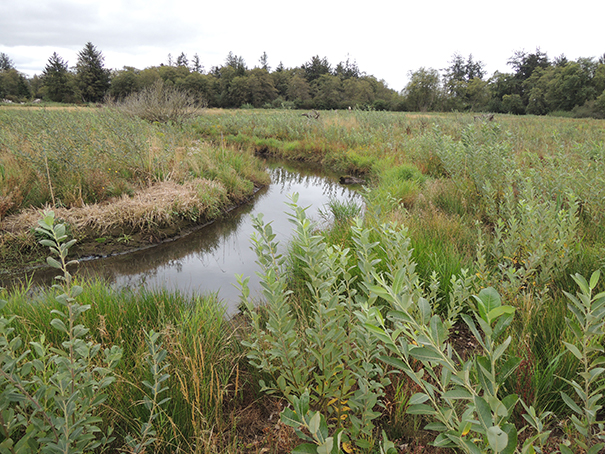Portland, Ore. –August 27, 2018– Nearly a year in, Hampton Lumber’s pilot pollinator habit enhancement project is starting to produce results. Hampton started planting native wildflowers and tracking pollinator utilization earlier this year on 18 acres of recently harvested timberland outside of Knappa, OR. Hampton manages roughly 30,000 acres of forestland in Clatsop County to provide raw materials for the company’s sawmill in Warrenton, OR. Timber harvest sites can act as important pollinator habitat by opening up areas of forest canopy for plant and animal species that require more sunlight to thrive. Hampton’s project seeks to further improve that habitat by creating food and nesting conditions on harvest sites that are ideal for important pollinator species.
 Hampton’s current efforts are focused on native bees. The project is led by Jed Arnold, Hampton’s Community Outreach & Stewardship Coordinator for Oregon’s North Coast. Arnold is working with experts at the Oregon Department of Forestry (ODF) and Oregon State University’s (OSU) Pollinator Health Program to design and evaluate the project. “Our foresters have done a lot of great work to improve fish habitat and passage on our lands, but we’re new to bees,” says Arnold. “It’s an exciting project for us.”
Hampton’s current efforts are focused on native bees. The project is led by Jed Arnold, Hampton’s Community Outreach & Stewardship Coordinator for Oregon’s North Coast. Arnold is working with experts at the Oregon Department of Forestry (ODF) and Oregon State University’s (OSU) Pollinator Health Program to design and evaluate the project. “Our foresters have done a lot of great work to improve fish habitat and passage on our lands, but we’re new to bees,” says Arnold. “It’s an exciting project for us.”
As researchers are only just beginning to examine forests as pollinator habitat, Hampton’s project will help scientists identify best management practices for forestland owners who may want to implement their own programs in the future. To date, Arnold has identified a number of native seed species that have high success rates on timberland along the north coast. He has also made progress in identifying the micro-environments in which different species thrive. For instance, blue tansy seems to do particularly well in burned slash piles. Knowing which species will have the greatest likelihood of survival will improve outcomes and keep costs down in future plantings.
Based on germination success rates, Arnold is also starting to get an idea of the kinds of post-harvest site treatments that could increase success of both wildflower propagation and native bee colonization. “This is just our first year doing this, but I’ve noticed that the most successful sites for wildflower germination seem to be where there was extensive slash removal,” says Arnold.
A recent study led by Oregon State University wildlife biologist, Jim Rivers, indicates these sites are also a boon to ground nesting bees. Based on initial observations during the project’s first year and research findings by Rivers and his team, Hampton is planning to conduct secondary slash removal in some harvest sites this winter to assess its potential to enhance germination and nesting habitat.
There are hundreds of native bee species in Oregon. Determining which ones are frequenting managed forests is not always easy. OSU scientists have trained Arnold in species sampling techniques and will be providing Hampton with both the equipment and identification services to conduct an extensive population survey next year.
This coming winter, Hampton plans to plant wildflowers on an additional 20 acres of recently harvested timberland and will continue monitoring to see which, if any, wildflower species naturally spread and colonize nearby roadsides and other potential habitat sites.
“Managed landscapes like these provide a variety of wildlife habitat that changes over time as trees grow, are harvested, and then replanted,” says Arnold. “They’re dynamic environments.”
While the wildflowers planted as part of this project are expected to thrive for years to come, they won’t be there forever. “In 5-10 years, the young trees in these study areas will start to shade out the flowers we’re planting now,” says Arnold. “But by then, we should have new patches of wildflowers coming up in nearby sites.”
Click here for more information on Hampton’s North Coast pollinator project.
###



